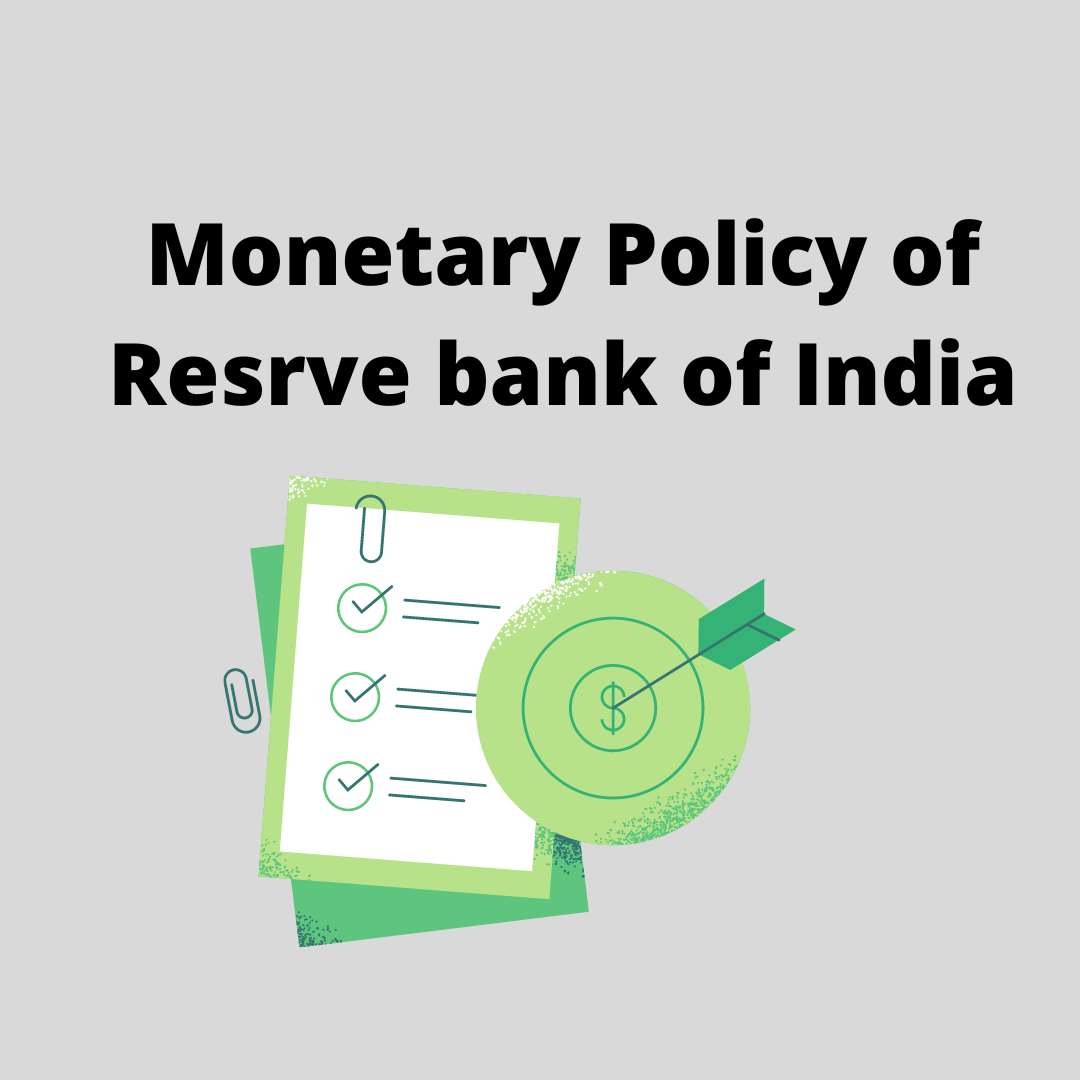Monetary Policy or credit Control Methods of RBI. Monetary policy is defined as the policy of the Central Bank where the cost, availability, and use of money are controlled by using monetary methods so as to attain predetermined objectives. It uses various instruments to determine aggregate demand for goods and services or analyze the trends in the economic sectors.
Credit Control is the most significant tool of monetary policy. The Reserve Bank of India uses this tool to control the demand and supply of money in the economy. To maintain stability in the market the Central Bank regulates the commercial banks with their credit flow in the economy. This helps the banks to manage the inflationary conditions, promote economic growth, and improve the level of national income. The instruments of credit control can be categorized into:
Monetary policy Credit Control Method of RBI
- Quantitative Method
- Qualitative/ Selective Credit Controls
Quantitative Methods :
Monetary policy theory of Quantitative methods are as follows-
1 ) Bank Rate :
The bank rate is the oldest monetary policy instrument and is also known as the discount rate. It is the rate at which the RBI discounts or rediscounts the eligible bills. Broadly speaking, it refers to a minimum rate that the central bank uses to provide financial accommodation to commercial banks as lender of the last resort in the discharge of its function. both the credit availability and credit cost are affected by the bank rate policy.
2) Open Market Operations by RBI :
The process of buying and selling of various assets by the RBI is known as Open Market Operations. Such assets include a foreign exchange. government securities, company stocks, and gold. The main function of such operations is to affect the economy by either augmenting or reducing the money supply.
3) Variations in the Reserve Requirement
Variation in reserve requirement is another important tool used by the reserve bank for controlling credit in the country. The credit creation capacity of the banks may be influenced by the change in ratio.
Following are the two main types of this ratio:
- CRR ( Cash Reserve Ratio )
- SLR ( Statutory Liquidity Ratio )
i) CRR (Cash Reserve Ratio) –
This ratio is also known as CRR. Cash Reserve Ratio implies that a commercial bank is required to keep a certain portion of its total deposits with Reserve Bank. This portion is known as Cash Reserve. The central bank generally keeps this ratio ñi the range of 3 percent to 15 percent of the aggregate time and demand liabilities.
ii) SLR (Statutory Liquidity Ratio)
This ratio implies that a commercial bank needs to keep a certain portion of its total deposits with itself in the form of liquid assets. It is defined as a certain percentage of total time and demand liabilities. This tool is used for influencing the velocity of credit money in the economy. It can be increased or decreased by RBI.
Reserve bank may increase this ratio to curtail credit volume generated by commercial banks. The regulation of credit volume further impacts the velocity of lending money in the economy.
4) Repo Rate and Reverse Repo Rate
When the commercial banks have any shortage of funds the Reserve Bank provides financial help in terms of loans. The rate at which banks borrow rupees from RBI is called the Repo rate. Any reduction in the repo rate will help commercial banks to lend money at a lower rate. On the other hand, if the repo rate increase then borrowing from RBI become more expensive.
The rate at which the Reserve Bank of India (RBI) borrows money from commercial banks is called the Reverse repo rate. Commercial banks are very comfortable lending money to RBI because their money is in safe hands With a good interest. If the reverse repo rate is increased, then in encourage to transfer more funds to RBI due to this attractive interest rate. It can cause the money to be drawn out of the banking system.
5 ) Liquidity Adjustment Facility
This credit control tool is used in monetary policy which allows commercial banks to borrow money through repurchase agreements. This arrangement allows banks to respond to liquidity pressures and is used by the government to assure basic stability in the financial markets.
Selective Credit Controls (Qualitative) Method.
The qualitative instruments are explained below:
1) Credit Rationing :
It is the instrument used by the commercial banks to maintain and regulate the rationale for providing credit to the public. It focuses on restraining the number of loans and advances approved by banks. Sometimes, it limits the loans and advances of a particular category. Credit rationing may also be used by Central Bank tO limît discounts on short-term bills.
2) Margin Requirement :
The difference between the market value and maximum loan value of a particular is called margin. The flow of credit can be controlled by altering the marginal requirement of a loan. For example, if a person deposits their property worth 1,00,000 as a security, then he will receive a loan amount of 85,000 only from the bank. Therefore, the margin will be 15,000, which makes the marginal requirement of 15%. Likewise, as the credit limit increases, the marginal requirement decreases.
3) Publicity :
Publicity is also used as an instrument for credit control. It is mainly used by the RBI to review the prevailing market conditions and direct the commercial banks to follow the recommendations in order to control market fluctuations.
4) Regulation of Consumer Credit:
The regulation of consumer credit helps the Central Bank to present the market from inflation and deflation of the economy. For example, in the case of consumer durables with high prices having excess demand, the Central Bank can increase the down payment, and reduce the number of repayment installments to reduce the consumer credit. On the contrary, in case of deflation due to the deficit demand of certain commodities, Central Bank can decrease the down payment and increase the number of repayment installments to increase the consumer credit.
5) Moral Suasion:
Persuasion and request combine to form ‘moral suasion’. Central Bank uses this tool of credit control over commercial banks by way of persuasion and request. In case of an inflationary situation, the commercial banks avoid giving loans for provisional and non-essential purposes on the persuasion and request of the Central Bank. On the contrary, in dealing with deflation, commercial banks extend their credit with the approval of the Central Bank. Hence, the objectives of monetary policy can be successfully achieved by commercial banks with the help of the moral suasion of the Central Bank.
6) Direct Action :
The Central Bank reserves the right to take any action against commercial banks which violate the guidelines of the Banking Regulation Act. It maintains the follow-up of guidelines and directions of the central bank.

